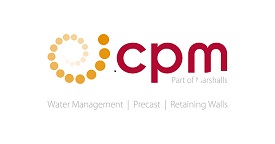 Add My Company
Add My Company
Sign In
Sewer Asset Management under a Totex regime
03-05-2016

The introduction of asset management period six, known as AMP6 by industry regulator Ofwat has seen water company costs measured on a total expenditure basis for the first time, which requires the proper consideration of the long term performance of assets in addition to capital cost efficiencies.
The five year period of AMP6 between April 2015 and March 2020 aims to increase the efficiency of asset management without increasing costs for consumers.
Under previous asset management periods, water companies have tendered contracts to construction firms to update some of the company’s assets and to keep existing infrastructure properly maintained for the five-year duration of the AMP. Ofwat, however, was concerned that under these AMPs water companies may have been using capital expenditure (capex) to build assets, such as water treatment works, to make a business more valuable for its shareholders rather than on reducing operational expenditure (opex) to deliver better value to customers.
AMP 6 differs from previous AMP rounds in that Ofwat no longer views capex and opex as distinct cost arenas, instead costs are now measured on the combined or total expenditure required, also known as totex. In bringing in these changes Ofwat is looking for the water businesses to focus on delivering outcomes that directly benefit customers, rather than create assets. It is up to the water company to decide how to divide its capex and opex expenditures; for example, if a water company can get its customers to use less water there will be less need for capital expenditure to build more supply capacity.
In theory the move should encourage long-term decision making. Outcomes are extended beyond the traditional five-year regulatory cycle giving companies more flexibility in creating an environment in which they are rewarded for delivering the long term outcomes required by the customer.
This focus on totex represents a profound change in business orientation; one that is difficult to successfully implement instantly because it requires fundamental change across all areas of the business as the result of a suitably planned and co-ordinated change management programme. As a result, understandably to an extent, water companies have not yet fully got to grips with this huge cultural and operation shift and currently appear to be paying lip service to totex when in reality they are continuing to drive down capital expenditure using existing procurement models and supplier terms of contract.
A key aspect of totex is asset management and getting the maximum service life out of assets. What any good asset manager should be doing, in a risk based context, is looking at the life expectancy of an asset and assessing how much it will cost for that asset to operate over its required service life.
The service life of an element, or system, is the length of time it can be expected to perform before its performance falls below the original design requirements without rehabilitation. This is not to be confused with design life, which is usually the period over which 100% of an asset’s depreciation is calculated. A long, proven service life is a major advantage of concrete pipeline systems.
A big challenge for asset owners in demonstrating authentic totex savings is the need to make reliable forecasts on the future performance of assets and the interventions required in order to extend the service life of the asset. This will be particularly challenging if accepting higher capex costs in order to deliver lower (opex and) totex costs. The design team must have confidence that the asset will perform as predicted and there needs to be adequate operational data and experience relating to the asset dating back for an appropriate period of time. Totex cannot be determined reliably without proper consideration of the long term performance of assets in addition to capital cost efficiencies.
In addition to a proven long service life and the totex benefits this brings to asset owners, precast concrete pipes also have distinct capital cost saving possibilities when the structural design of the pipeline installation indicates that an alternative bedding Class is suitable. A common bedding solution for concrete pipeline installations is Class B which requires only the lower half of the pipe to be surrounded with granular material. This contrasts with Class S specification which is typically required for all commonly available flexible plastic sewer pipes. Class S requires a full surround of granular bedding material around the pipe, leading to higher volumes and costs for the imported aggregates, higher disposal costs for the material removed from the trench and taken to landfill and higher carbon emissions for the installation.
For more information on Sewer Asset Management under a Totex regime talk to Marshalls CPM
Enquire Now
List your company on FindTheNeedle.

